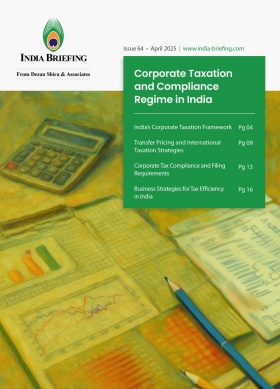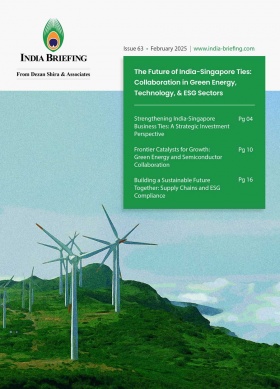US Tariffs Set to Resume August 1; India Pushes for Balanced Trade Pact
The United States is set to reinstate suspended reciprocal tariffs starting August 1, 2025. While some countries will face steep new duties, India has secured a three-week reprieve as negotiations with Washington continue.
India Briefing explores the latest developments surrounding the Trump administration’s tariff move and examines India’s position in the ongoing trade talks with the US.
As the United States (US) prepares to reinstate reciprocal tariffs, countries such as India are working against the clock to secure a trade agreement. On July 7, 2025, Trump issued formal tariff notifications to several trade partners—including close allies such as Japan and South Korea—indicating that the reciprocal duties suspended in April would be reinstated in a more stringent form by August 1, 2025.
Under the new tariff structure, exports from Japan and South Korea to the United States will face a 25 percent duty. Other countries, such as Indonesia, Bangladesh, Thailand, South Africa, and Malaysia, are expected to incur even higher tariffs, ranging between 25 and 40 percent.
Notably, India was excluded from this round of tariff notifications, with Trump indicating that the United States is nearing a trade agreement with New Delhi.
The administration had initially unveiled a base tariff rate of 10 percent in April, with additional duties of up to 50 percent on a country-wise basis. A 90-day grace period against the implementation of reciprocal tariffs was later granted to most countries—to allow time for negotiations. This has now been extended by three additional weeks.
READ MORE: Countdown to the End of the 90-Day Tariff Pause: Where Does India Stand Now?
Temporary suspension of tariffs offers breather for exporters
The US administration has extended the suspension of its reciprocal tariffs on certain countries, including India, until August 1, 2025. The reciprocal tariffs were slated to come into effect on July 9, 2025; however, the temporary delay has brought relief for Indian exporters. This also gives negotiators from both countries some additional time to finalize an interim trade deal. The decision on tariff extension was announced on July 7, 2025 via an executive order from the White House.
“I have determined, based on additional information and recommendations from various senior officials, including information on the status of discussions with trading partners, that it is necessary and appropriate to extend the suspension effectuated by Executive Order 14266 until 12:01 a.m. eastern daylight time on August 1, 2025.” – Donald J. Trump, The White House, July 7, 2025.
Indian exporters respond positively, but caution remains
Indian exporters have largely welcomed the reprieve. The Director General of the Federation of Indian Export Organisations (FIEO) interpreted the move as a sign of Washington’s willingness to engage in constructive dialogue with India. Additionally, concluding a bilateral trade agreement (BTA)—particularly on goods—could give India an advantage over countries that are now subject to new US tariffs.
While India’s firm stance at the negotiating table may have prompted the US to extend the tariff pause, the extension should be viewed as a short-term window of opportunity. Trade experts have advised Indian exporters to continue diversifying markets to mitigate the risks posed by unpredictable US trade policies.
ALSO READ: How Indian Exporters Can Offset Trump Tariffs Using US Foreign-Trade Zones
US tariffs to take effect on August 1
On July 7, 2025, Trump issued formal tariff notices to 14 countries, including Japan, South Korea, Bangladesh, Myanmar, Laos, Thailand, Cambodia, Malaysia, Serbia, Tunisia, and South Africa. These letters outlined Washington’s intent to impose new tariffs on imports from these nations starting August 1, 2025.
The proposed tariffs closely resemble the reciprocal duties first announced on April 2—referred to as “Liberation Day”—which had been temporarily suspended until July 9.
According to Trump, the aim of these tariffs and the accompanying trade agreements is to reduce the US’s trade deficit. He also signaled potential flexibility on the timeline, indicating that the August 1 deadline may not be absolute.
Washington has already secured deals with the United Kingdom (UK) and Vietnam; however, talks with major partners like India remain unresolved. It is worth noting that Britain and the US have still not reached a tariff agreement on the UK’s steel exports to the US.
India holds firm as interim trade deal nears finalization
India and the US appear close to finalizing a mini trade agreement. The proposed deal is expected to include tariff concessions on select US agricultural exports like pecan nuts and blueberries. This is in exchange for expanded market access to the US for Indian labor-intensive goods, including textiles and leather products.
Despite intensified pressure from the US, India has maintained a firm position on the terms of the trade agreement. The Union Commerce and Industry Minister Piyush Goyal emphasized that India will continue to prioritize its national interest and will not be forced into an agreement under external deadlines.
Reports suggest that New Delhi has communicated its non-negotiable points to its US counterparts, placing the onus on Washington to conclude the talks.
GTRI warns of risks from GM feed imports
One contentious element under consideration in the trade talks is India’s potential acceptance of GM animal feed imports from the US. This proposal has raised major concerns about its impact on India’s export competitiveness, particularly in the EU.
In a statement released on July 6, the Global Trade Research Initiative (GTRI) cautioned that permitting GM feed products like soybean meal and distillers dried grains with solubles (DDGS) could compromise India’s image as a GMO-free exporter. This would particularly affect India in high-scrutiny markets such as the EU, where consumer preference strongly leans toward non-GM products.
GTRI founder Ajay Srivastava warned that even minimal GM contamination could damage India’s reputation in premium global markets. Allowing GM contamination could lead to export rejections, higher compliance costs, and reputational harm—especially in key sectors such as rice, tea, spices, honey, and organic produce.
GM crops are created by inserting genes—often from bacteria, viruses, or other species—into plant DNA to enhance traits like pest resistance or herbicide tolerance. Srivastava has made a note that while such crops are biologically plant-based and considered vegetarian, the use of animal-derived genes can raise ethical and religious concerns in India.
Although studies suggest GM DNA is broken down during digestion and does not enter animal-derived products like milk or meat, consumer advocacy groups continue to push for stricter labeling and transparency to preserve consumer choice.
India’s regulatory framework on GM imports
Addressing seed reuse, Srivastava noted that GM seeds are usually patented hybrids, restricted by legal agreements that prohibit replanting. These seeds also typically underperform when reused. In India, Bt cotton is the only GM crop approved for cultivation, and even its reuse has shown limited success.
Bt cotton in India is a GM variety of cotton that contains a gene from the soil bacterium Bacillus thuringiensis (Bt). This gene enables the cotton plant to produce a protein toxic to specific pests, particularly the bollworm, reducing the need for chemical pesticides. Bt cotton, introduced commercially in 2002, is the only GM crop approved for cultivation in India and is widely adopted across cotton-growing regions.
India maintains a conservative policy on GM imports. While GM soybean oil and canola oil are allowed, imports of GM grains, pulses, fruits, oilseeds, and animal feed products—including soybean meal and DDGS—are currently prohibited. Although field trials for some GM food crops are ongoing, no commercial approvals have been granted.
Srivastava concluded by cautioning that contamination risks exist throughout the post-harvest supply chain, including during transport, storage, and processing. This can make India’s export ecosystem vulnerable if GM imports are allowed without strict safeguards.
(This article was originally published on July 7, 2025. It has since been updated July 8, 2025.)
About Us
India Briefing is one of five regional publications under the Asia Briefing brand. It is supported by Dezan Shira & Associates, a pan-Asia, multi-disciplinary professional services firm that assists foreign investors throughout Asia, including through offices in Delhi, Mumbai, and Bengaluru in India. Dezan Shira & Associates also maintains offices or has alliance partners assisting foreign investors in China, Hong Kong SAR, Vietnam, Indonesia, Singapore, Malaysia, Mongolia, Dubai (UAE), Japan, South Korea, Nepal, The Philippines, Sri Lanka, Thailand, Italy, Germany, Bangladesh, Australia, United States, and United Kingdom and Ireland.
For a complimentary subscription to India Briefing’s content products, please click here. For support with establishing a business in India or for assistance in analyzing and entering markets, please contact the firm at india@dezshira.com or visit our website at www.dezshira.com.
- Previous Article 印度新财务规则将于 2025 年 7 月 1 日生效:企业需知事项
- Next Article Hiring Employees in India: A 2025 Guide for Global Businesses








